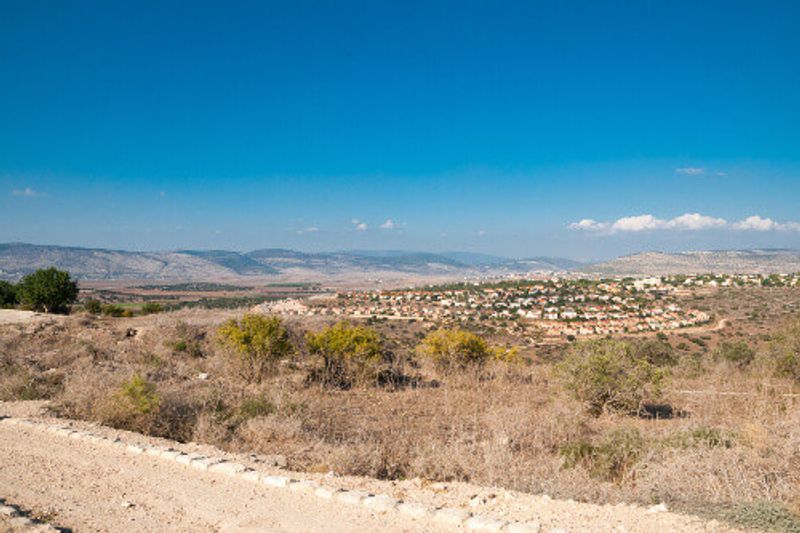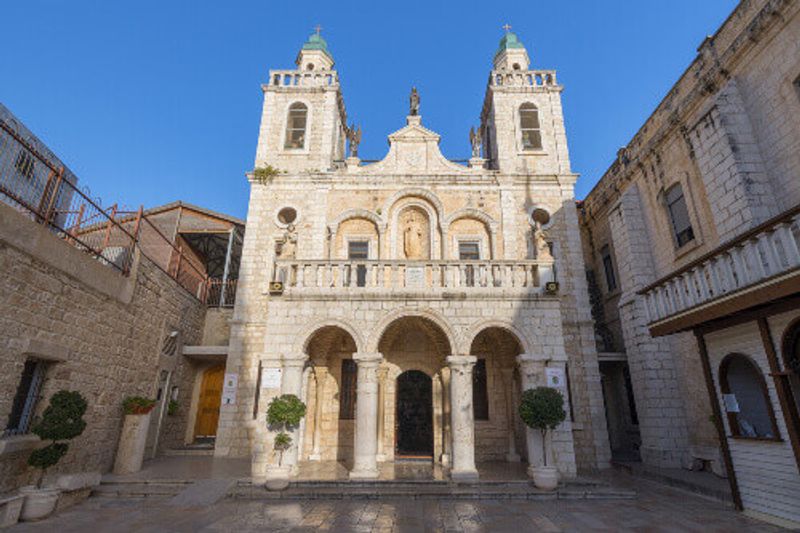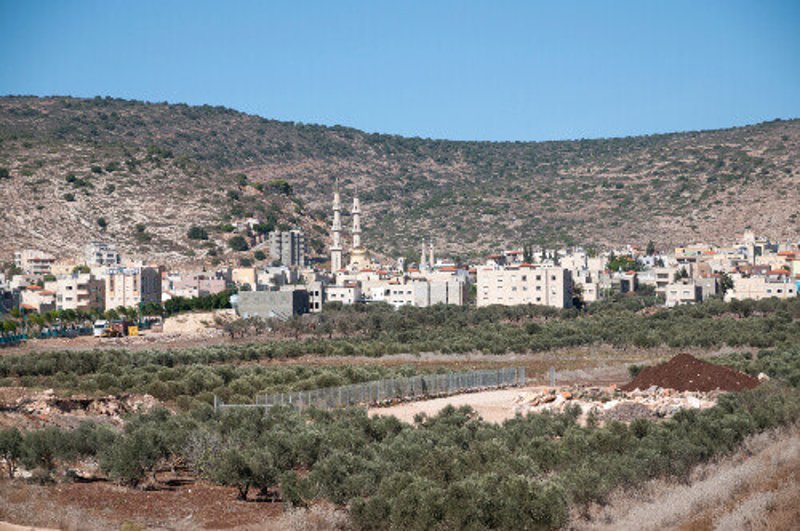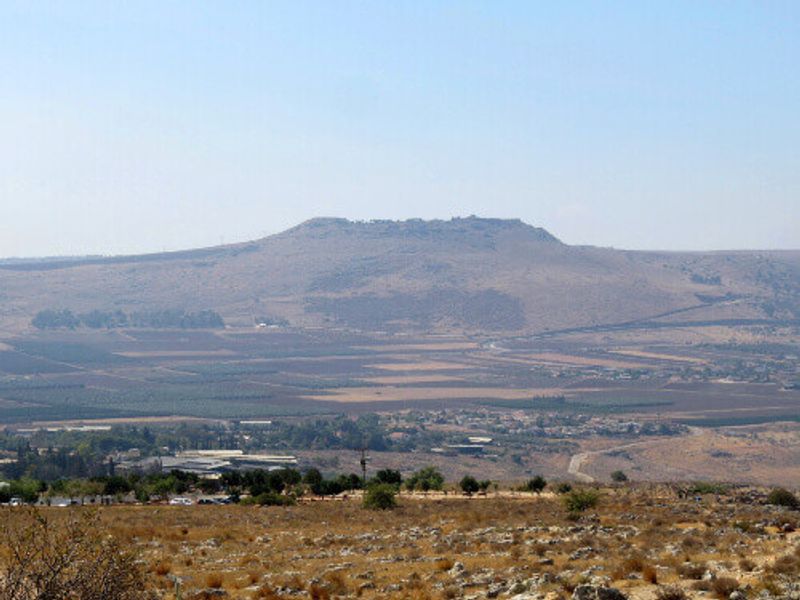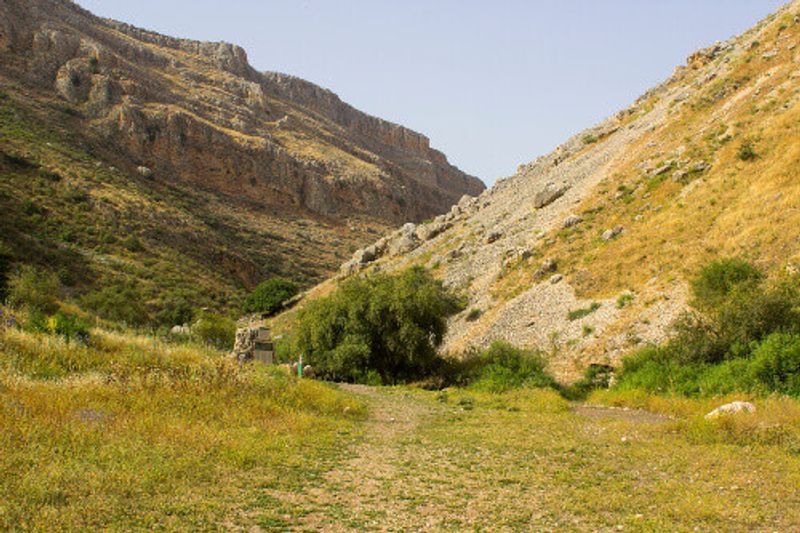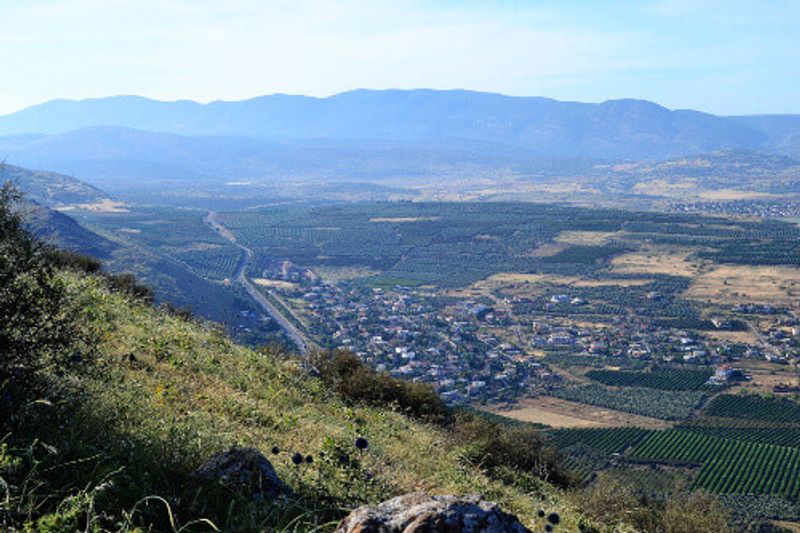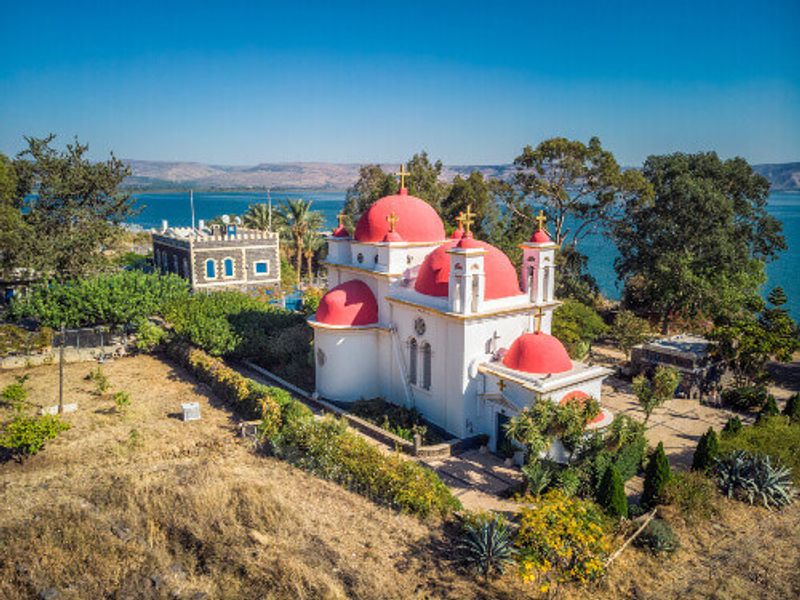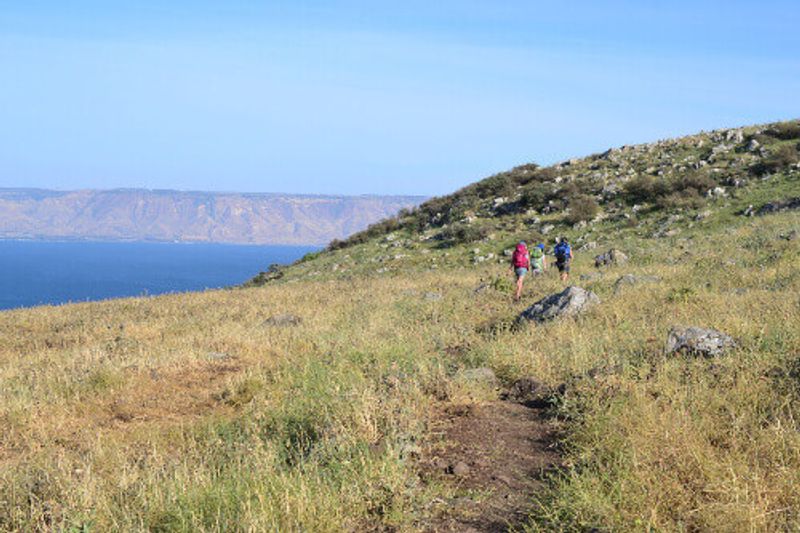The Jesus Trail is a 65 km hiking and pilgrimage route - take in the route Jesus may have walked
For some, walking Israel’s Jesus Trail is the opportunity to retrace Jesus’ steps across Galilee; for others, it’s a chance to take on a four-day, sun-bleached trek connecting Nazareth, the Sea of Galilee, the Horns of Hattin and Capernaum through a historic landscape of olive groves, hills and nature reserves.
Best foot forward, then. Here’s the lowdown.
Day One: Nazareth to Cana (15.5 km)
From the trailhead at the Basilica of the Annunciation in Nazareth’s Old City, follow the white-and-orange striped markers to a steep flight of 406 steps. You’ll reach the hilltop village of Tzippori and surrounding national park which protects the ruins of Sepphoris, the region’s administrative centre in Roman times. Pause for breath to glimpse the Byzantine floor mosaics here, especially the iconic 'Mona Lisa of the Galilee.'
Tramping on, passing the Arab town of Mash'had – referred to as Gath Hepher in the Hebrew Bible – and crossing an olive-grove-flanked ravine, Cana awaits. The town’s Franciscan Wedding Church attracts thousands of wedding-vow renewals each year as this is where the gospels speak of Jesus turning water into wine. The guesthouses of Cana welcome the weary traveller for the night.
Day Two: Cana to Kibbutz Lavi (13.9 km)
Hikers now head east from Cana through the forested Tur’an valley en route to the small but storied village of Ilaniya, home to Yarok Az, an organic goat farm and ecolodge. Wannabe cheese makers can stay to learn the art but the rest must continue to Golani Junction; 100 m on is a ridge with the remains of an ancient Roman road that linked Acre and Tiberias, a major east-west thoroughfare 2,000 years ago.
Here Kibbutz Lavi can be found, a cooperative set up in 70 years ago by Jewish immigrants from the UK. Now sporting a 148-room hotel, the kibbutz makes synagogue furniture and has a memorial dedicated to relatives of members who perished in the Holocaust.
Day Three: Lavi to Moshav Arbel (17 km)
A slightly longer trek today, with the trail winding its way first to Nebi Shu’eib – the holiest site for local Arab sect the Druze – which lies at the base of the Horns of Hattin. This double volcanic formation resembles the horns of a bull and is the site of an 1187 battle between parched Crusader and Muslim armies. The latter, under the first Sultan of Egypt Saladin, emerged as the victors.
Walkers will tread old olive groves and scenery seemingly untouched by history, before arriving the delightful village of Moshav Arbel.
Day Four: Moshav Arbel to Capernaum (18.5 km)
The most stunning scenery of the Jesus Trail is saved from the final day. From the cliffs of Mount Arbel National Park lies one of the world’s greatest vistas: the glisteningly blue Sea of Galilee and a panorama stretching from the Golan Heights to the Jordan River valley.
A steep path descends and switchbacks across the cliffs, from where cliff dwellings built by the Druze, or even earlier nomads, can be seen. Passing through a Bedouin Village, the trail reaches the Galilean coastline and a collection of small pebble beaches from where hot-and-bothered hikers can swim.
The trail ends in Capernaum, a large fishing village at the time of Jesus. It’s worth continuing for another 2.5 km to the Mount of Beatitudes, known for Jesus’ Sermon on the Mount, to spend some time in tranquil gardens and Franciscan church and soak some yet more superb views of the area. Walkers may well also congratulate themselves on rising to a historic challenge.
Useful facts
The 62 km Jesus Trail was conceived by a group of hikers in 2007, and officially marked out in 2009. It can be walked, either independently or with a guide. Self-guided tours include accommodation, meals and a detailed guide book.
It’s possible to camp along the trail but the founders encourage hikers to overnight in the villages along the way – to reduce any environmental impact and contribute to the local economy.
As Maoz Inon, an Israeli tourism entrepreneur who co-founded the Trail, told a reporter in the early years, "One of the highlights is that one night you are staying with a Muslim family in Cana and the next night with Jewish families in Kibbutz Lavi. This is the core of the Jesus Trail."
What to bring
For a safe trip, you must carry three-to-five litres of water per person each day. Water is readily available every few hours for most of the trail. JesusTrail.com offers free maps in GPX format to download onto GPS devices. The site also offers accommodation options.
When to go
To enjoy ideal hiking temperatures of around 25 degrees, avoid the height of summer. Optimal times are between October and November, or February and mid-May. Visit in Spring to see the surrounding terrain at its most green and lush. In both seasons you can expect some rain, so plan to pack rain gear.
